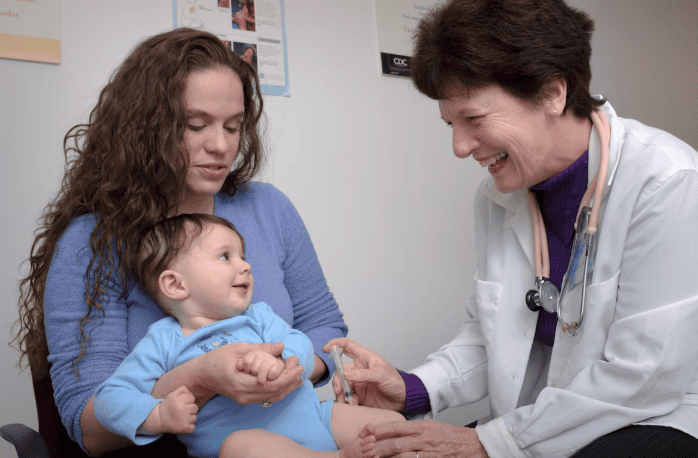Are you dreaming of fuller lips that look effortlessly natural, without crossing into the overdone look territory? You’re not alone. Subtle lip enhancement is the key to achieving soft volume and refined contours that highlight your features—without overshadowing them.
Whether you’re exploring options for the first time or refining a previous treatment, this guide will help you embrace fuller lips with confidence and elegance.
Why You’ll Love Subtle Lip Enhancement
The psychology behind natural-looking fullness
There’s an undeniable emotional pull towards natural beauty. When your lip enhancement preserves your unique traits while subtly amplifying volume, it can create a look that feels both aesthetic and authentic.
Psychologically, people associate natural-looking lips with youth, vitality, and approachability, making subtle enhancement a powerful tool not only for self-image but also for interpersonal dynamics.
Research in consumer behavior and neuroscience highlights that minimal, symmetrical changes are perceived as more trustworthy and attractive. Instead of dramatic alterations, refined touches to your lips can enhance facial balance—sending nonverbal cues of warmth and confidence.
How confidence soars with defined contours
Defined and softly contoured lips don’t just frame a beautiful smile—they elevate your whole expression. When you feel that your lips reflect your personal style and beauty goals, it triggers a deep sense of self-assurance. You begin to speak differently, smile more often, and carry yourself with poise.
Subtle enhancements bring out the best in your features without drawing attention solely to your lips. They harmonize the lower face with the rest of your appearance, which generally results in more compliments on “looking fresh” or “well-rested” rather than on a specific procedure. That’s the magic of natural enhancement done right.
Understanding Your Lip’s Unique Anatomy
Key areas that shape your smile
Before enhancing your lips, it’s crucial to understand their structure. Your lips aren’t simply a blank canvas—they’re a delicate, dynamic part of your face made of specific zones that contribute to their appearance:
- Vermilion border: The edge where your lip color meets your skin. Defined borders create that crisp, youthful edge.
- Cupid’s bow: The soft M-shape on the top lip that adds dimension and symmetry.
- Philtrum columns: Vertical lines that run from the nose to the upper lip, enhancing definition.
- Lower lip fullness: Typically, a slightly fuller lower lip balances proportions.
Understanding these areas helps tailor the enhancement to your unique facial structure—adding subtle volume in just the right places.
Age-related changes and what to expect
As we age, lips naturally lose volume, hydration, and pigment. The collagen and elastin that once gave lips bounce and structure begin to fade. You may notice:
- Flattening of the Cupid’s bow
- Thinning of the vermilion
- Vertical lip lines (also known as smoker’s lines)
- Downturned mouth corners
These changes are entirely normal but can affect how youthful or expressive your lips appear. The good news? Modern enhancement techniques can rejuvenate your lips while preserving their character, helping you look more like your vibrant self again.
Choosing the Right Technique for Volume and Contour
Fillers vs. fat grafting vs. threads
Today’s aesthetic treatments offer more choices than ever, and each technique delivers unique benefits. Here’s how the top methods compare:
- Hyaluronic acid fillers: The most common method for lip enhancement. They’re temporary, reversible, and offer smooth texture and instant results. Ideal for beginners or those seeking subtle volume.
- Fat grafting: Uses your own fat (usually from the abdomen or thighs) processed and reinjected into the lips. This method offers long-lasting results but involves more downtime.
- Threads for lip contouring: Biodegradable threads placed beneath the skin can enhance symmetry and lift drooping corners. Best for defining shape rather than adding volume.
Choosing the right intervention depends on your goals, anatomy, and lifestyle. A seasoned provider should help you weigh the pros and cons of each and recommend a custom solution.
Customizing your approach to fit your features
No two faces are the same—so why should any two lip procedures be? The best outcomes come from tailoring the technique and filler placement to your unique facial proportions, preferences, and even personality.
For example, some clients prioritize a bold Cupid’s bow, while others want a pillowy lower lip or a more hydrated, glossy look. The customization process involves discussing:
- How much volume is appropriate for your face size
- Where definition can enhance symmetry
- Whether your lips should match a specific emotional aesthetic (e.g., soft, romantic vs. bold and sculpted)
This personalized approach ensures your smile doesn’t lose what makes it yours—it only gets better.
Expert Tips for a Natural-Looking Finish
Precise injection points for balanced results
Achieving a “barely enhanced” look relies on expertly placed microinjections that deliver volume where needed without creating puffiness. Some principles of natural enhancement include:
- Central focus: Adding volume primarily to the center parts of the lips enhances natural curve without “duck lips.”
- Asymmetry correction: Subtle balancing of uneven areas while maintaining facial harmony.
- Layering: Building volume slowly over multiple sessions creates healthier, more natural outcomes.
An experienced injector understands how each point affects overall structure and expression, ensuring a soft, balanced finish.
Blending and smoothing for seamless transitions
Another secret to undetectable enhancement is in the blending. When filler is smoothly layered and integrated with surrounding tissues, lips maintain natural movement and contour. Techniques that promote blending include:
- Massaging during and after injection to prevent lumps
- Use of cannulas for smoother distribution
- Hydrating formulations that adapt to motion, such as smiling and speaking
The goal is a seamless transition between treated and untreated areas, so your lips don’t look artificially separated from the rest of your face. Texture and tone need to work together for a flawless finish.
Avoiding the “Overdone” Trap
Common signs of an exaggerated look
You’ve likely seen lips that seem obviously altered—and not in a flattering way. The difference between refined and overfilled often comes down to proportion and technique. Warning signs of an overdone look may include:
- Disruption of the natural lip-to-chin ratio
- A protruded or “shelf-like” upper lip
- Lack of visible Cupid’s bow or lip border
- Excessive volume that distorts facial balance
These results can not only look unnatural but also impact confidence negatively. Avoiding them starts with knowing what’s “too much” for your face—and collaborating with a provider who shares your aesthetic values.
How to communicate your ideal outcome to your provider
A key to getting the lips you want lies in clear communication. Before your appointment, take time to reflect on what you love and dislike—from selfies, inspiration photos, or past treatments. During your consultation:
- Describe how you want to feel, not just how you want to look.
- Be honest about any past experiences and their outcomes.
- Ask your provider for a digital preview or sketches.
- Discuss volume in milliliters, not just appearance, for better clarity.
Remember, you’re the expert on your own sense of beauty. A good professional listens first, explains clearly, and ensures you’re aligned on expectations before the first touch of filler.
Maintaining Your Luscious Lips Over Time
Simple at-home care routines
Post-treatment care is just as important as the procedure itself. To prolong the benefits of subtle enhancement and keep your lips soft and healthy:
- Hydrate daily with a quality lip balm rich in ceramides or hyaluronic acid
- Avoid smoking and excess sun exposure, which accelerate aging
- Use a jade roller or lip massage techniques to improve blood flow
- Follow any aftercare instructions closely: no kissing or sipping through straws for 24–48 hours
These small efforts reinforce the longevity and feel of your new lips—and prevent the common pitfalls of dryness or rough texture.
When to schedule follow-up sessions
While results can last from 6 to 12 months, maintenance varies by individual and technique. To keep your contours defined and volume natural:
- Schedule touch-ups every 6–9 months for hyaluronic acid fillers
- See your provider sooner if you notice visible volume loss or asymmetry
- Use follow-up visits to refine shape and symmetry, not just add volume
Consistent, minor updates are far more effective than waiting for full dissipation. This gentle approach ensures your enhancements remain undetectable and elegant.
Fillers vs. fat grafting vs. threads
Today’s aesthetic treatments offer more choices than ever, and each technique delivers unique benefits. Here’s how the top methods compare:
Hyaluronic acid fillers: The most common method for lip enhancement. They’re temporary, reversible, and offer smooth texture and instant results. Ideal for beginners or those seeking subtle volume.
Among the options available, Revanesse Ultra stands out for its exceptionally smooth consistency and natural integration into the tissue. Designed with advanced cross-linking technology, it allows precise shaping and soft definition — perfect for achieving full yet balanced lips.
Because of its refined texture, Revanesse Ultra helps maintain natural movement and expression, avoiding the stiffness or heaviness sometimes seen with other fillers. The result is a soft, hydrated, and youthful look that feels authentically yours.
Fat grafting: Uses your own fat (usually from the abdomen or thighs) processed and reinjected into the lips. This method offers long-lasting results but involves more downtime.
Threads for lip contouring: Biodegradable threads placed beneath the skin can enhance symmetry and lift drooping corners. Best for defining shape rather than adding volume.
Choosing the right intervention depends on your goals, anatomy, and lifestyle. A seasoned provider should help you weigh the pros and cons of each and recommend a custom solution.
































